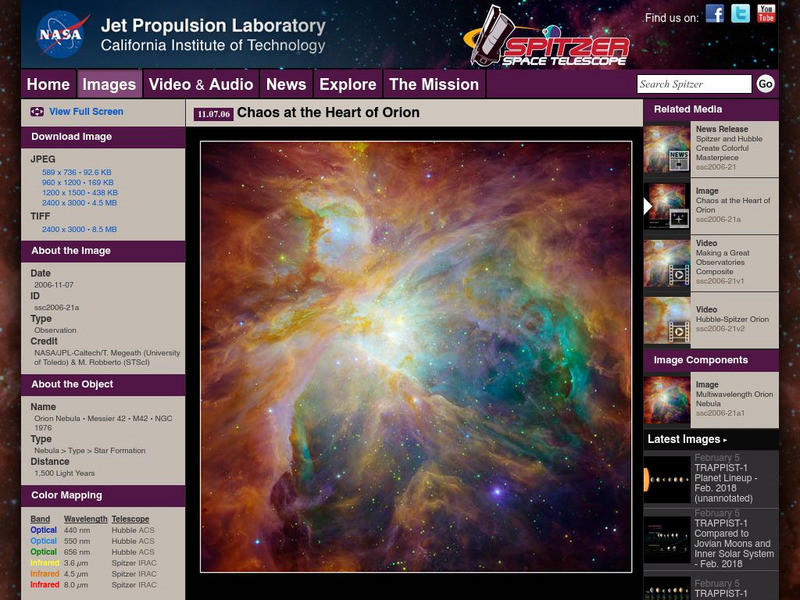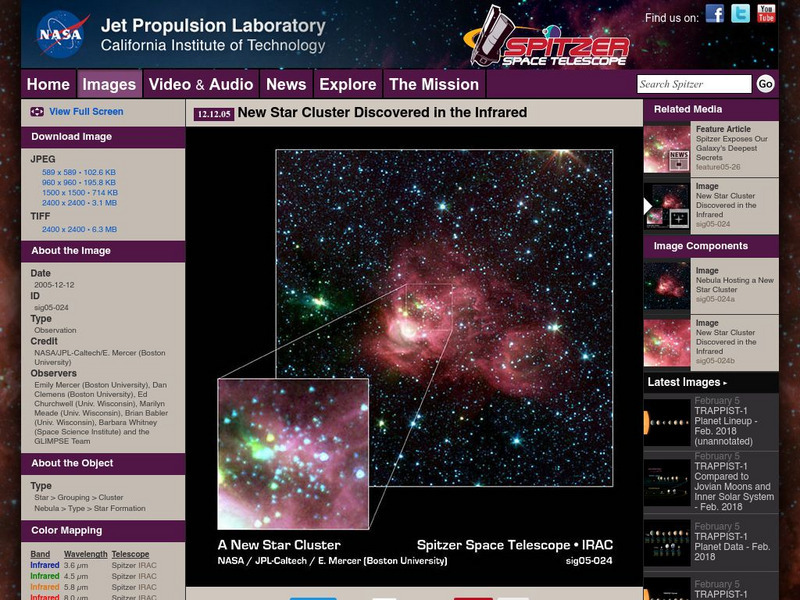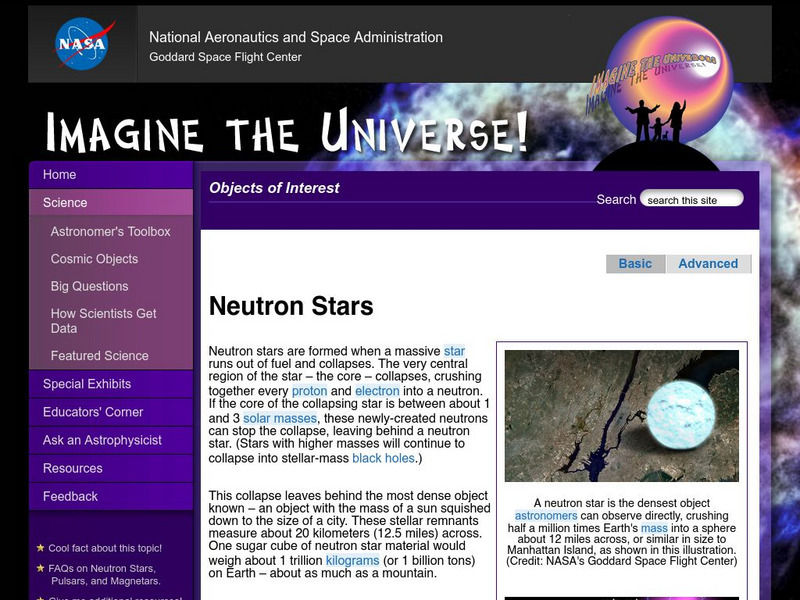Hi, what do you want to do?
NASA
Nasa: Jet Propulsion Laboratory: Planet Quest: Exoplanet Exploration
Constellation of articles, images, diagrams, posters, videos, and more on the subject of the search for planets, particularly Earth-like planets, outside our solar system.
ClassFlow
Class Flow: Space
[Free Registration/Login Required] This flipchart describes what causes the seasons, explains the moon's phases, and introduces what a constellation is. It utilizes the Activotes to help describe the phenomena.
California Institute of Technology
Spitzer Science Center: Red Giant Image
This image features two views of the "bow shock" of a dying star in the Hydra Constellation. The text below the image proceeds to explain a "bow shock" in relation to the red giant star pictured.
California Institute of Technology
Spitzer Science Center: Crab Nebula
This image, titled "Crab Nebula Supernova Remnant" features the Crab Nebula which was noted in the constellation of Taurus by Chinese astronomers. The text under the image details various specifics about the picture.
Globio
Glossopedia: Stars
Many of the objects you can see in the night sky are stars, large objects in space that produce light. Our galaxy, the Milky Way, contains more than 100 billion stars. Stars are so far away that their light does not reach us for years....
Other
Hong Kong Space Museum
Besides an introduction to exhibitions and events at the museum, the site provides a guide to stargazing, an astronomy FAQ, space news, virtual tours (see site map) and research resources (including Chinese-English star and constellation...
California Institute of Technology
Spitzer Science Center: Heart of Orion
Under the picture titled "Chaos at the Heart of Orion" this site explains in detail the various features of the image displaying the Orion Nebula.
American Museum of Natural History
American Museum of Natural History: Carl Sagan and the Quest for Life in the Universe
A brief biography of American astronomer and science advocate Carl Sagan.
California Institute of Technology
Spitzer Science Center: A New Star Cluster
The image entitled, "A New Star Cluster" shows the formation of a new group of stars located in the Milky Way galaxy. The text below the image goes into detail on describing the various specifics of the image.
University Corporation for Atmospheric Research
Ucar: High Alt. Observatory: Nicolaus Copernicus (1473 1543)
This site contains a short biography of Copernicus.
Other
Astromador: Astronomia Para Amadores
This resources focuses exclusively on astronomy. It's packed with historical facts about space exploration, famous people who pioneered the study of stars and planets. It features chronological list of space exploration, current news,...
NASA
Nasa: Imagine the Universe: Neutron Stars and Pulsars
Discover what neutron stars and pulsars are and view pictures of them. Includes links to additional resources and lesson plans.
Massachusetts Institute of Technology
Mit: Open Course Ware: Hands on Astronomy: Observing Stars and Planets
A university-level course in basic observational procedures in astronomy. Covers how to use a telescope, and includes lecture notes.
Other
World Wide Telescope
After downloading the WorldWide Telescope software, students can explore the universe with three-dimensional navigation and narrated guided tours of the sky. Users can also import their own tour to share with others. Site has educator...
British Library
British Library: International Dunhuang Project: Chinese Astronomy Resource
Using the early Dunhuang Star Atlas, an important historical and scientific document of the sky seen from China dating from before AD 700, learn about astronomical history from the perspective of China. Find resources and analysis that...
NASA
Nasa: Imagine the Universe: X Ray Binary Stars
Site provides a brief introduction to binary stars. Additional resources for students and teachers on this topic are offered as well as related topics.
Other
Stellarium: Planetarium
Bring a planetarium to your computer with this free open source software. Download the software to show the sky in 3D with the naked eye.
Other
Paper Plate Education: Serving the Universe on a Paper Plate
Excellent resource for "paper-plate" activities that help simplify various astronomy topics. Learn how to build a "Moon Finder" and "Planet Pointer," and create a paper-plate model that explains the Transit of Venus.

















